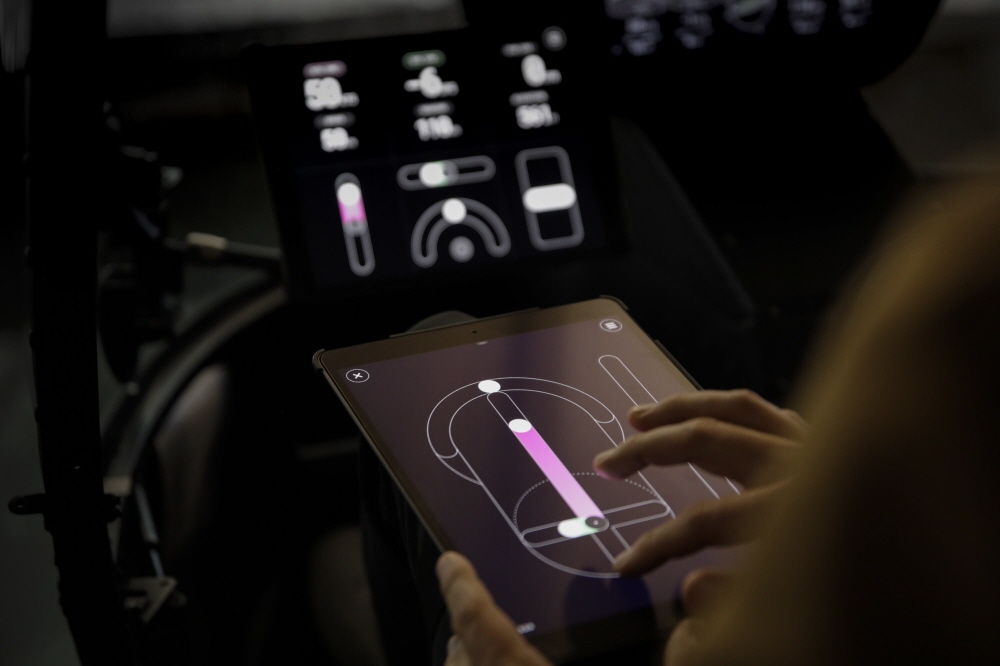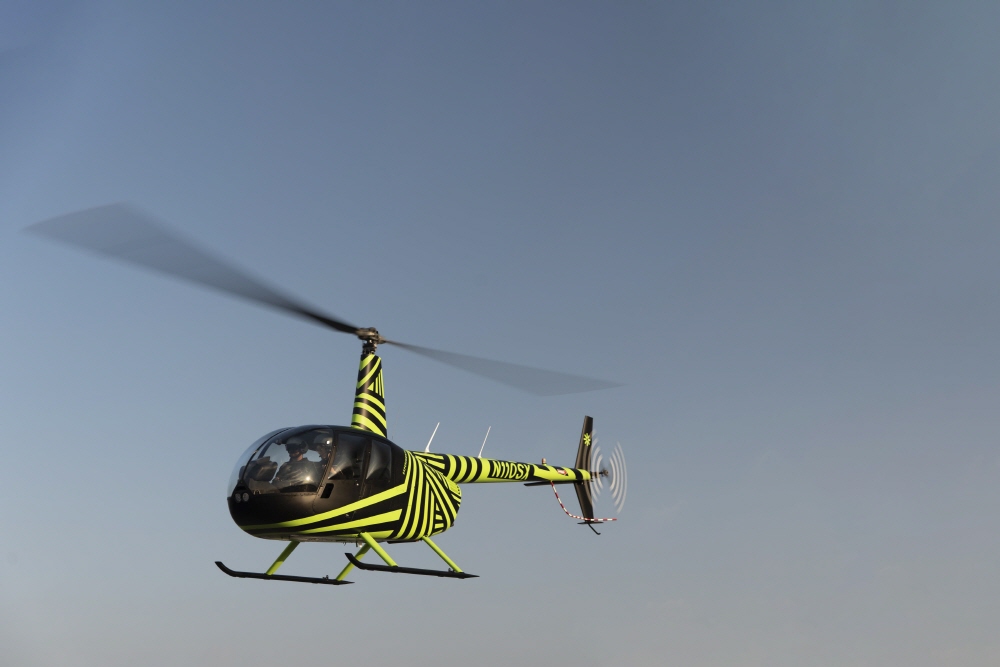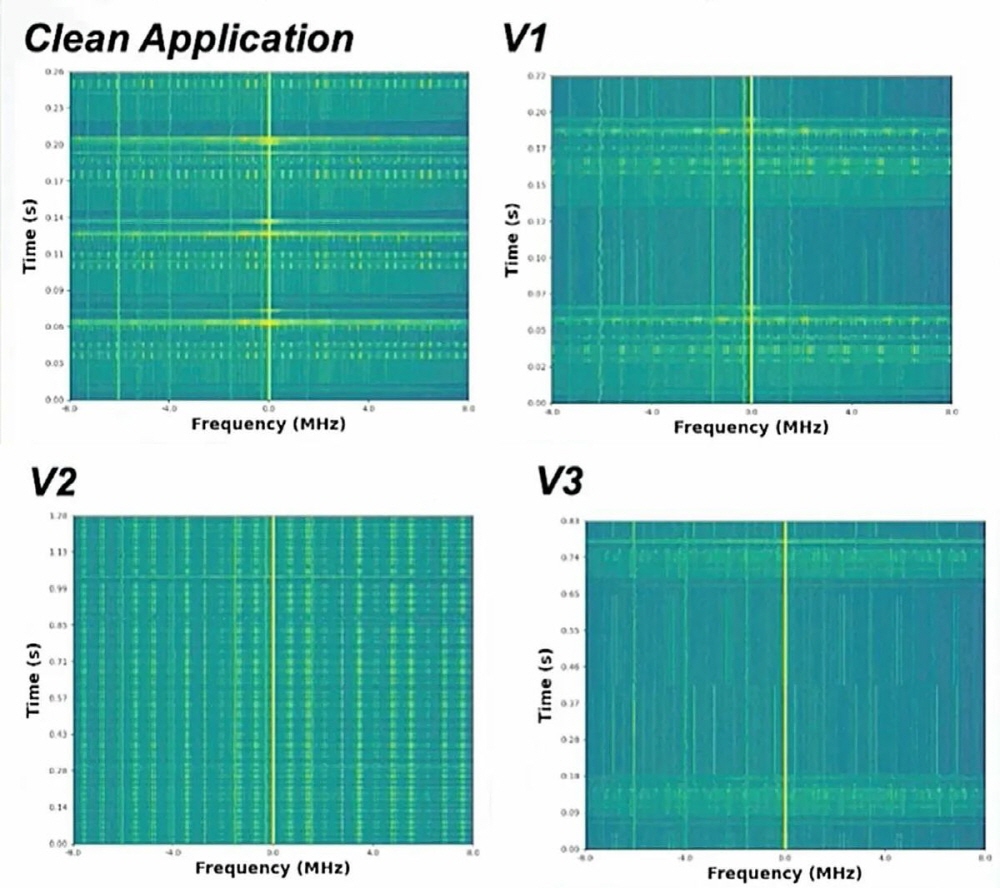
Various companies, such as Google’s Waymo, Tesla, and Ford and Volkswagen, which jointly invested a large amount in a startup called Argo AI, are studying overnight with a lottery ticket for fully automatic driving. Autonomous driving technology can be applied not only to cars running on the ground, but also to airplanes flying in the sky. Through the experience of driving a helicopter that can be easily operated using only an iPad and a joystick as a driving assistance system, you can get a glimpse of the development of automatic flight technology.
The helicopter driven in the experience climbed to an altitude of 3,000 m, exited the valley along the orchards and canals, turned around, returned to the airfield, and landed quietly in a hovering position. After about 15 minutes of training, they were able to take off, fly, and land using the FlightOS system, which consists of two iPads mounted in the cockpit and a joystick. FlightOS performs take-off, turn, acceleration, ascent, descent, hover landing, etc. with screen taps or stick operations, just like a video game flight simulation.
In this way, FlightOS can achieve a high level of flight assistance even as of October 2021. Skyryse, a startup developing FlightOS, aims to fly everything from helicopters to small jets fully automated using cameras, radar and other sensors. Not only Skyrise, but also Lockheed Martin’s helicopter manufacturing companies Sikorsky and Aircraft are aiming for fully automatic flight.

Fully automatic driving of a car requires technology that recognizes various obstacles such as pedestrians and terrain. On the other hand, you might think that automatic flight is relatively easy to achieve, since the sky in which the plane flies is independent of these obstacles. However, experts say it will take at least 10 years for approval and regulators are unlikely to approve autonomous flight, so Skyrise is working on developing a pilot-accompanying flight assistant with the goal of far ahead of fully automatic flight.
When flight assistance systems such as FlightOS enter the market, in addition to a significant increase in the number of new pilot license holders, those who already have a pilot license can easily learn to fly an aircraft that has never been piloted before. As a result, the number of aircraft in operation is expected to increase dramatically, and consulting firm McKinsey predicts that the number of pilots is likely to increase from 360,000 to 590,000 over 10 years.
Over the next few years, Skyrise plans to automate more in the form of less reliance on controllers or pilots, and the current goal is that anyone can become a pilot. Related information can be found here.
Of course, there is a risk that malicious changes to an attacker could lead to serious accidents in aircraft or automobiles with automated driving. A system was developed that scans and detects electromagnetic waves emitted from hardware for such malicious changes.
In January 2020, Iranian forces shot down a Ukrainian civilian aircraft, mistaken for a military aircraft. Reports point out that similar incidents could occur if malicious changes were made to an automated weapon system. To prevent this situation, the US Defense Advanced Research Projects Agency (DARPA) developed SHEATH (Safeguards against Hidden Effects and Anomalous Trojans in Hardware), a project to prevent Trojan horse attacks on hardware. As a result, they developed an AI system that detects malicious changes by scanning electromagnetic waves from hardware.

This system is being trained to detect electromagnetic waves unique to hardware that has been maliciously modified, and the detection accuracy is said to be 98.87%.
The company that participated in the system development (Aether Argus) is trying to commercialize the system. The system detection capability developed this time is said to be helpful not only for weapons but also for defense of 5G infrastructure. Related information can be found here.


















Add comment